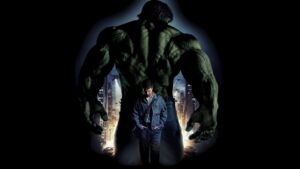
Marvel Studios / Universal Pictures
THE INCREDIBLE HULK
Starring Edward Norton (Bruce Banner / The Hulk), Liv Tyler (Betty Ross), William Hurt (Thaddeus Ross), Tim Roth (Emil Blonsky / The Abomination), Tim Blake Nelson (Samuel Sterns), Ty Burrell (Leonard Samson), and Martin Starr (“Computer Nerd” Roger Harrington) with a special appearance by Stan Lee and a pre-credits appearance by Robert Downey Jr as Tony Stark
Directed by Louis Leterrier
Produced by Kevin Feige, Gale Anne Hurd, and Avi Arad
Written by Zak Penn (with Edward Norton)
Music By Craig Armstrong
Distributed by Universal Pictures
Run Time: 1 hour and 52 minutes
World Premier: June 8, 2008, in Los Angeles, California
Opening Weekend Box Office: $55 million (North America)
Worldwide Box Office: $263 million
Rotten Tomatoes Score: 68%

Marvel Studios / Universal Pictures
Memorable Incredible Hulk Quotes
“With The Incredible Hulk, we wanted to go back to the broader sense from the comics, and really the fugitive-type manhunt structure of the television series, which was brilliant.” – Kevin Feige.
“We wanted to come up with a design for The Hulk that stood-up to the high-def screens most people are going to be looking at this film on nowadays. And that was inspired directly from his most famous incarnations in the comic books.” – Kevin Feige.
“We wanted to have a villain that [Hulk] could confront, that would be more powerful than he was. It would be stronger than he was, so that Hulk, throughout the course of the film, could go from a monster that was hunted to a hero that faces a creature – a villain – even stronger than he is.” – Kevin Feige describing the decision by Marvel Studios to pit The Hulk against The Abomination in The Incredible Hulk
“Betty has the totally unique quality of being able to look at Hulk and still see Bruce.” – Edward Norton explaining why Betty Ross is so dear to Doctor Bruce Banner in The Incredible Hulk.
“General Ross is a perfect character to me. I felt very liberated playing him.” – William Hurt
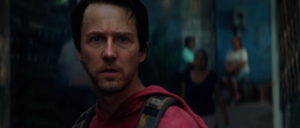
Marvel Studios / Universal Pictures
Fun Incredible Hulk Facts
The Hulk was created for Marvel Comics by Stan Lee and Jack Kirby, debuting in The Incredible Hulk # 1 in May of 1962. Stan Lee admitted to being influenced by characters such as Frankenstein and Dr. Jekyll & Mister Hyde in coming up with the concept of The Hulk. The monstrous character was actually gray when he first appeared in Marvel Comics but was quickly changed to green due to printing issues. The Incredible Hulk was Marvel Studios’ second independently produced feature film following 2008’s Iron Man. While Iron Man was distributed by Paramount Pictures, The Incredible Hulk was distributed by Universal Pictures. Universal Pictures previously worked with Marvel Studios on Ang Lee’s 2003 Hulk film, and amendments to preexisting contracts are what enabled Universal to distribute The Incredible Hulk.
On July 22, 2006, at Marvel Studios’ inaugural panel at San Diego Comic Con, The Incredible Hulk was promoted by Kevin Feige, Avi Arad, and Ari Arad. Louis Leterrier was introduced as the Director of The Incredible Hulk, and it was during this presentation that Kevin Feige publicly mentioned his desire to see The Avengers assemble on-screen, hinting that the first slate of Marvel Studios films revolving around core members of that team was no coincidence.
Director Louis Leterrier originally sought to cast actor Mark Ruffalo to portray Bruce Banner / The Hulk, but Marvel Studios and Universal Pictures would end up going with Edward Norton, who’s casting was announced on April 15, 2007. Ultimately, this would be Norton’s lone appearance within the MCU however, and in 2010, he would be replaced by none other than Mark Ruffalo, who has gone on to define the role for a generation.
Jeph Loeb and Tim Sale’s 2003 limited comic book series Hulk: Gray heavily influenced The Incredible Hulk.
Actor Edward Norton re-wrote the script for The Incredible Hulk significantly after being cast, changing many aspects of the film, including dialogue additions and character motivations. Marvel Studios ultimately cut many of the scenes that Norton wrote despite the fact that they added significant character development to the film. The general consensus on Marvel Studios’ side was that the film was too long and that a greater emphasis needed to be put on action sequences rather than dramatic ones. Norton and Director Louis Leterrier reportedly lobbied for a cut of the film that was 2 hours and 20 minutes in length, but the approved cut was ultimately a mere 1 hour, 52 minutes. An attempted suicide scene revolving around Banner was one of Norton’s scenes left on the cutting room floor, as was an extensive conversation between Norton’s Bruce Banner and Ty Burrell’s Leonard Samson, which made it much clearer that Samson was the person that alerted General Ross to Banner’s whereabouts, leading to the Culver University ambush. The events that led to Banner’s first transformation into The Hulk were also filmed in detail but were ultimately only seen in brief glimpses during the opening credits montage. Not only did Norton not get his wish in terms of the story that he wanted to tell, but he was also denied a writing credit by the Writer’s Guild. These things and more are generally believed to be the reason Norton did not reprise his role in 2012’s The Avengers.
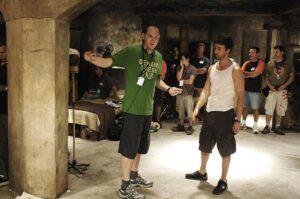
Marvel Studios / Universal Pictures
The Incredible Hulk commenced filming on July 9, 2007, in Toronto, Ontario, Canada, just two weeks after Marvel Studios’ Iron Man wrapped filming in Las Vegas, Nevada. The Culver University ambush sequence was the first scene filmed, with shooting taking place at the University of Toronto and Morningside Park. Filming also took place in Hamilton, Ontario, Canada, New York City in the United States, and Rio de Janeiro, Brazil. Filming on The Incredible Hulk ended in November of 2007, completing an eight-month stretch of physical production for Marvel Studios dating back to March, and the production of Iron Man.
Edward Norton and Tim Roth filmed their Hulk vs Abomination fight on a stage, using motion capture via 37 digital cameras.
On July 28, 2007, Marvel Studios returned to San Diego Comic Con for its second presentation there. The Incredible Hulk was heavily promoted with Kevin Feige, Avi Arad, Gale Anne Hurd, Director Louis Leterrier, and stars Edward Norton and Liv Tyler all appearing together in what marked Marvel Studios’ inaugural appearance in the esteemed Hall H of SDCC.
Near the beginning of The Incredible Hulk, when Edward Norton’s Bruce Banner is flipping through the channels on his television, the late Bill Bixby can briefly be seen on the screen. Bixby portrayed David Bruce Banner in the popular Incredible Hulk television series from 1977-1982. Lou Ferrigno, who portrayed The Hulk in that same series opposite Bixby, also cameos in The Incredible Hulk as a security guard. Reportedly, it was Ferrigno who suggested Edward Norton for the part of Bruce Banner.
There are several Easter-eggs pertaining to Marvel superhero Captain America throughout The Incredible Hulk. Most notably, the serum that transforms Doctor Bruce Banner into The Hulk was derived in an effort by the Military to perfect the Super Soldier Serum that was invented by Doctor Abraham Erskine during World War II that transformed the weak, frail, and sickly Steve Rogers into Captain America. Also, as I alluded to earlier, an alternate opening was filmed during which the frozen body of Captain America and his Vibranium shield could both be glimpsed under the ice after Bruce Banner attempted to commit suicide, only for “The Other Guy” to spit the bullet out. Though this scene was cut from the film, it was alluded to by Mark Ruffalo’s Bruce Banner in The Avengers, making it an official part of MCU canon.
In The Incredible Hulk, Hulk co-creator Stan Lee makes his second MCU cameo appearance, portraying a character who unwittingly drinks a beverage tainted with Bruce Banner’s blood.
In The Incredible Hulk, a sample of Bruce Banner’s blood spills into an open wound on Tim Blake Nelson’s Samuel Sterns’ forehead. His head instantly begins to mutate and then he smiles, foreshadowing his transformation into Marvel Villain The Leader. Over the course of the 17-years that followed The Incredible Hulk, Nelson’s Leader was nether seen nor heard, but the character at long last returned in 2025’s Captain America: Brave New World.
The Incredible Hulk is the only Phase One MCU film in which Samuel L. Jackson’s Nick Fury does not make a physical appearance. The Director of S.H.I.E.L.D.’s name can be seen during the opening credits montage, however, and the S.H.I.E.L.D. logo is seen on-screen as well when Ross accesses the S.H.I.E.L.D. database to track the elusive Banner during the film. Fury and S.H.I.E.L.D. were introduced into the MCU in 2008’s Iron Man and though Fury was absent, The Incredible Hulk does feature a surprise pre-credits appearance by Robert Downey Jr’s Tony Stark, which served to explicitly establish for viewers that The Incredible Hulk takes place within the same Shared Cinematic Universe as Iron Man.

Marvel Studios / Universal Pictures
Over 700 visual effects shots were created for The Incredible Hulk in post-production through the utilization of motion capture and computer-generated imagery in an effort to effectively bring The Hulk to life. Universal Pictures’ aforementioned Hulk film in 2003 was widely criticized for its CGI presentation of The Hulk, and most fans and critics alike agreed that The Hulk himself, in 2008, looked better than he ever had before in live action. This MCU version of The Hulk did not get bigger when he became angrier, as he was kept to a consistent height of 9-feet and this MCU version of The Hulk’s skin was also a darker shade of green and was built like a tank, depicted with zero grams of fat and a chiseled physique, while being defined by his muscle and strength.
As the Marvel Cinematic Universe evolved over the years, debates over when various events actually occurred began to plague the fandom. Originally, most everyone viewed the MCU Timeline as existing concurrently with our real-life timeline, i.e., The Incredible Hulk was released in 2008, therefore, the events of The Incredible Hulk primarily take place in 2008. However, the release of Iron Man 2 in 2010, and Thor in 2011, complicated things, as those films suggested that most of the events seen in The Incredible Hulk happen concurrently with the events seen in Iron Man 2 and Thor as part of a series of events that were labeled “Fury’s Big Week” by Marvel Entertainment; the Timeline of which was first laid out in an intended MCU tie-in comic book of that same name. “Fury’s Big Week” was revisited upon a Branched Timeline in 2021 in Marvel Studios’ Disney+ animated series What If …? Season One in the episode titled What If … the World Lost its Mightiest Heroes? Beyond that, in 2023, Marvel Studios endorsed the release of a book that was intended to settle lingering disputes within the fandom, titled Marvel Studios – The Marvel Cinematic Universe: An Official Timeline. This book confirmed that Bruce Banner first transformed into The Hulk during the mid-2000’s and that we catch up with the character in The Incredible Hulk in the Spring of 2010 where he is in hiding and desperately looking for a cure to his condition. Banner’s confrontation with General Ross and Emil Blonsky at the bottling plant occurs two years after Tony Stark publicly announced that he was Iron Man and after Tony Stark and Ivan Vanko’s public clash at the Monaco Grand Prix. From there, Justin Hammer begins working with Ivan Vanko, Thor’s coronation gets interrupted by Frost Giants in Asgard, and Tony Stark brawls with James Rhodes in Malibu, after which Nick Fury meets with Tony at a doughnut shop. As Stark gets to work on a cure to his Palladium poisoning, Thor gets banished from Asgard to Earth by Odin after provoking a war with the Frost Giants. The battle at the Stark Expo pitting Iron Man and War Machine against Ivan Vanko then occurs, followed by Loki’s temporary seizing of the Asgardian Throne and brief visit to Thor on Earth while also on Earth, Bruce Banner returns to the United States. From there, Emil Blonsky gets injected with Super Soldier serum and Thor fights The Destroyer in New Mexico, then returns to Asgard to confront Loki. After the Bifrost is destroyed and Loki tumbles into the Abyss of Space, Blonsky challenges The Hulk at Culver University; a confrontation that sees the Super Soldier get physically decimated by the Green Goliath. This fight is recorded by concerned citizens and reported on by the Media. In Iron Man 2, footage from this showdown can be seen while Tony Stark and Nick Fury meet over The Avengers Initiative. Moving forward, The Hulk’s fight against The Abomination occurs in Harlem, after which Banner goes back into hiding. The pre-credits scene from The Incredible Hulk between Ross and Stark occurs after Agents Coulson and Sitwell conspire to send in Stark (now working as a Consultant for S.H.I.E.L.D.) to sabotage Ross’ hopes of having Blonsky included in Fury’s “Avengers Initiative.” And that is Fury’s Big Week.
During the initial years after the release of The Incredible Hulk, the film became unaffectionately labeled a “stepchild” of the MCU due to the fact that it was rarely referenced in ensuing projects and due to Mark Ruffalo replacing Edward Norton as Bruce Banner. In fact, from 2008-2015, sans Robert Downey Jr’s Tony Stark, no actor from The Incredible Hulk appeared in a single MCU project for 7-years. This had many within the fandom questioning if The Incredible Hulk was even officially canon to the MCU for a while there! All of this began to change however in 2016 when William Hurt’s Thaddeus Ross returned in Marvel Studios’ Captain America: Civil War. In that film, Ross revealed that he’d suffered a near-fatal heart attack that gave him a “new perspective” and that the former Military General went on to establish a political career as the United States Secretary of State. Marvel Studios – The Marvel Cinematic Universe: An Official Timeline confirmed that Ross suffered his heart attack in 2011 around the time that the preserved body of Steve Rogers / Captain America was found in the Arctic. Following Ross’ reemergence in Civil War, The Abomination appeared in 2021’s Shang-Chi and the Legend of the Ten Rings, with Tim Roth returning to voice the CGI monstrosity. Roth then more formally returned in the 2022 She-Hulk: Attorney at Law series on Disney+. With Ross and Blonsky back and the She-Hulk series going out of its way to reference select events from The Incredible Hulk (going so far as to have Mark Ruffalo’s Smart Hulk acknowledge that he was “a completely different person now … literally” when he fought The Abomination in Harlem), it was clear that The Incredible Hulk was in fact MCU canon and always had been. Moving forward, the 2022 D23 Expo saw Kevin Feige announce the return of Tim Blake Nelson as The Leader in Brave New World. Liv Tyler was later confirmed to be returning in Brave New World as well in a reprisal of her role as Betty Ross.
Sadly, actor William Hurt passed away on March 13, 2022, at the age of 71 after appearing as General / Secretary Ross in The Incredible Hulk, Captain America: Civil War, Avengers: Infinity War, Avengers: Endgame, and Black Widow. The Thunderbolt Ross character would nonetheless appear in Captain America: Brave New World with actor Harrison Ford portraying the character, who in that film is the President of the United States … as well as a (Red) Hulk!
The Incredible Hulk was released on DVD and Blu-ray on October 21, 2008, in the United States. On June 16, 2023, the film debuted on the Disney+ streaming service in the United States, where it can now be viewed alongside other Marvel Cinematic Universe titles.

Marvel Studios / Universal Pictures
My Incredible Hulk Review
I’m going to go ahead and start here by acknowledging the elephant in the room. I know, I know, a lot of people do not like this movie, and even if they do, they consider it amongst Marvel Studios’ worst films. I, however, am quite fond of this movie; maybe that’s because of my love for The Hulk as a character and my lingering disappointment that all these years later, we haven’t gotten another Hulk solo movie, but whatever it is, I enjoyed this film back in 2008, and I still enjoy it today, even though it is sort of weird to watch Edward Norton as Bruce Banner these days after spending so long with Mark Ruffalo in the titular role. Anyway, The Incredible Hulk was a mess of a movie behind the scenes that served in many ways as a learning curve for the Marvel Studios team in my opinion. While Iron Man stood as a bright and shining example of how to make a successful motion picture, I think The Incredible Hulk, in a lot of ways taught Kevin Feige and his team what not to do.
What made The Incredible Hulk such a troubled production were the creative differences between Universal Pictures, Edward Norton, and Marvel Studios. There were the now infamous Norton rewrites, there were the confusing efforts by Universal Pictures to stubbornly try to link this film to their 2003 Hulk movie, and there was Marvel Studios emphatically trying to avoid the same mistakes that 2003’s Hulk film made while rebooting the character into the MCU. All of that being said, Kevin Feige, Edward Norton, and Gale Anne Hurd ultimately made a respectable film together with several moments of redemption and even some hints of greatness.
For starters, The Incredible Hulk was far superior to 2003’s Hulk in every measurable way. It was a better story, it had better action sequences, and The Hulk looked well, incredible! In fact, the look of The Hulk was this film’s greatest strength and accomplishment for me. Sure, it’s a bit dated today, but at the time, it was spectacular! The Hulk looked big and mean and even scary, and it was amazing to see the Green Goliath brought to life in such an awesome way! Any time The Hulk was on the screen, I was captivated as a viewer. However, I will admit that I am an Edward Norton defender to an extent. First, I thought Norton was fantastic as Bruce Banner, particularly in terms of how Banner had been depicted in comics and in cartoons around this time. Second, I side with Norton on the length of the film debate. I have seen many of the scenes that were deleted via the Blu-ray, and I believe including these scenes would have made The Incredible Hulk a better movie. There is nothing wrong at all with character and plot development, but at the same time, I do understand Marvel Studios’ desire to not want to do another origin story five years removed from a 2003 film that waited about an hour into the movie to actually show The Hulk, and that was consequently labeled as slow and boring by many fans and critics.
The plot of The Incredible Hulk is simple and straight-forward. Bruce Banner is a fugitive on the run from a decorated General of the United States Army that had no small part in the events that transformed the brilliant scientist Banner into a monster. Banner wants to find a cure to his condition while Ross wants to weaponize it. The chase plays itself out throughout the movie as Banner reconnects with the love of his life (Ross’ daughter Betty) and Ross recruits decorated British soldier Emil Blonsky and plays no small part in his transformation into the monstrosity known as The Abomination. All of this leads to a showdown in Harlem where Ross and Banner unleash The Hulk upon The Abomination, with The Hulk coming out of the battle victorious.
All these years later, The Incredible Hulk no longer feels like the least-connected film in the MCU, thanks to projects like She-Hulk: Attorney at Law and Captain America: Brave New World, and I see that as a good thing, for there are some amazing scenes in this movie that should be appreciated such as the Bottling Plant Confrontation, which really embraced the horror of The Hulk character, the Culver University sequence, which was big and loud and featured an amazing transformation scene (that shot of Banner’s hand transforming on the glass was SO good, and the helicopter crash was a remarkable achievement in film-making). I also really liked the ensuing sequence with Bruce and Betty in the cave during the thunderstorm, and the final Hulk vs Abomination battle had everything fans of monster movie showdowns could ever want!
Could there have been more world-building? Absolutely. I do not deny that, but the MCU was in its infancy in 2008, and Marvel Studios was still trying to figure out just how this Shared Cinematic Universe would work. Plus, we still got references to S.H.I.E.L.D. and Stark Industries, and we got Robert Downey Jr as Tony Stark!
I also believe the film’s score deserves to be commended. Craig Armstrong’s music was at times haunting, at times somber, and at times powerful, and it added a lot to several scenes.
In the end, this film was lost in the shadow of Iron Man and more attention was paid to off-screen drama than to what was achieved on-screen. That is unfortunate, as I believe they got a lot right with this motion picture and it is well worth including in any MCU re-watch.

Marvel Studios / Universal Pictures
Highlights of The Incredible Hulk:
The Hulk brought to Life
William Hurt as General Thaddeus “Thunderbolt” Ross
Tim Roth as Emil Blonsky / The Abomination
Transformation Sequence and Ensuing Chaos at Culver University
Cave Sequence between The Hulk and Betty Ross
Blonsky creates The Leader
Banner’s Helicopter Free-Fall
Harlem Fight pitting The Hulk vs The Abomination
Hulk Smash!
Pre-Credits scene featuring Robert Downey Jr as Tony Stark
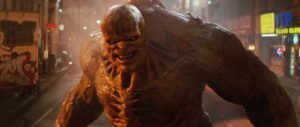
Marvel Studios / Universal Pictures
Continue following Bruce Banner’s MCU journey in The Avengers (2012), Iron Man 3 (2013), Avengers: Age of Ultron (2015), Thor: Ragnarok (2017), Avengers: Infinity War (2018), Captain Marvel (2019), Avengers: Endgame (2019), Shang-Chi and the Legend of the Ten Rings (2021), and She-Hulk: Attorney at Law (2022).
Continue following Thaddeus Ross’ MCU journey in Captain America: Civil War (2016), Avengers: Infinity War (2018), Avengers: Endgame (2019), Black Widow (2021), and Captain America: Brave New World (2025).
Continue following Emil Blonsky’s MCU journey in Shang-Chi and the Legend of the Ten Rings (2021), and She-Hulk: Attorney at Law (2022).
Continue following Samuel Sterns’ MCU journey in Captain America: Brave New World (2025).
Continue following Betty Ross’ MCU journey in Captain America: Brave New World (2025).
Continue following Tony Stark’s MCU journey in Iron Man 2 (2010), The Avengers (2012), Iron Man 3 (2013), Avengers: Age of Ultron (2015), Captain America: Civil War (2016), Spider-Man: Homecoming (2017), Avengers: Infinity War (2018), and Avengers: Endgame (2019).

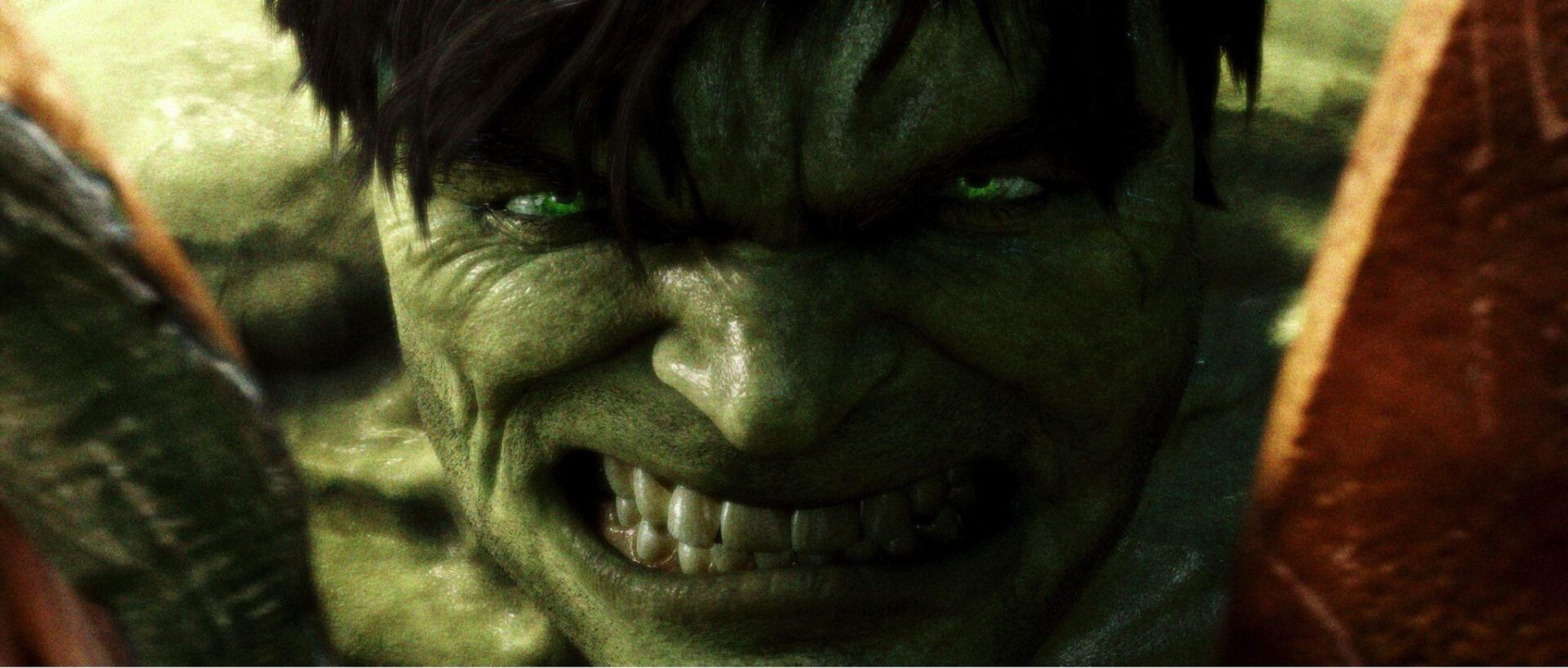
Leave a Reply